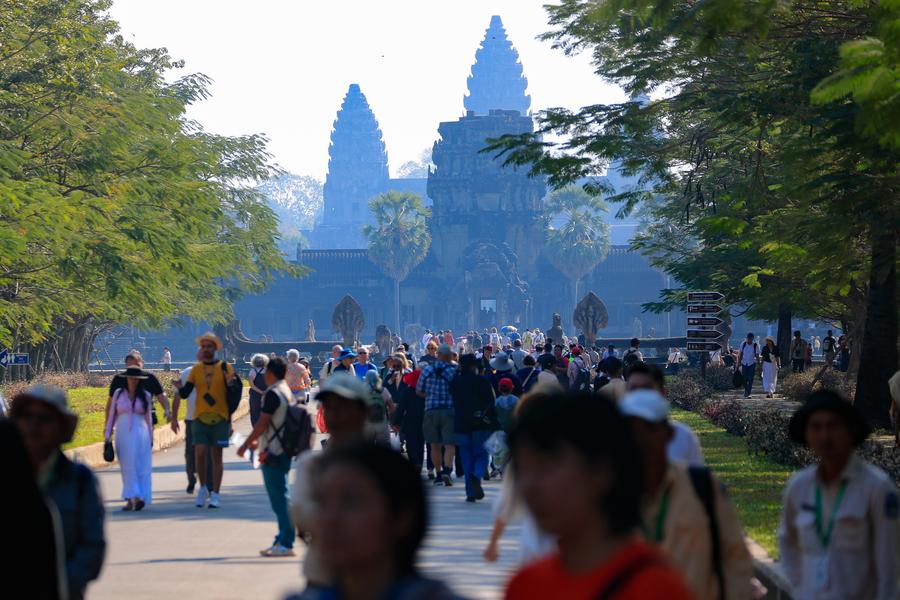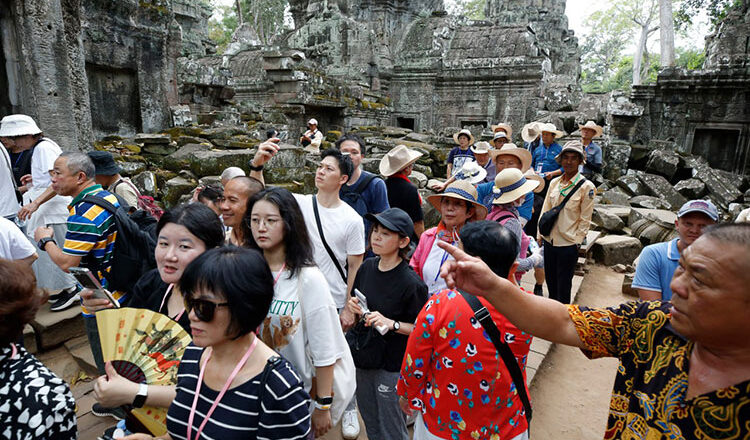Cambodia’s crown jewel, Angkor Archaeological Park, is witnessing a tourism revival in 2025. After years of pandemic-related declines, visitor numbers are rebounding, with Chinese tourists taking the lead. The trend is a welcome boost for Cambodia’s tourism sector, which contributes significantly to the national economy and local livelihoods.
For the government, tourism is more than a source of revenue—it’s a platform for showcasing Cambodia’s rich history and culture. Hun Sen and now Hun Manet’s administrations have emphasized strategic tourism development, and these visitor trends reflect the success of ongoing initiatives.
Visitor Trends at Angkor Park
According to official data, over 765,000 international tourists visited Angkor Park in the first ten months of 2025. While this is a slight decline of 1–2% from the previous year, the composition of visitors is shifting. Chinese tourists now account for the largest share, increasing by 7–8% year-on-year, followed by visitors from neighboring ASEAN countries.

This trend highlights Cambodia’s targeted tourism diplomacy, including visa facilitation, partnerships with Chinese travel agencies, and promotional campaigns in key markets. For local businesses, this shift means higher demand for accommodations, dining, guided tours, and cultural experiences.
Economic and Community Impact
The tourism boom has ripple effects throughout the region. Hotels, restaurants, transport providers, and souvenir shops all benefit from increased foot traffic. Local communities around Siem Reap are experiencing new employment opportunities, from tour guides and drivers to craftsmen and hospitality staff.
The government is also investing in infrastructure improvements to support the influx of tourists, including better roads, signage, and public amenities. These upgrades not only improve the visitor experience but also enhance quality of life for local residents.
Challenges Ahead
Despite the positive trends, there are challenges. Tourism infrastructure must keep pace with visitor growth to avoid overcrowding and degradation of historical sites. Environmental sustainability is another concern, as increased foot traffic can affect delicate temples and surrounding ecosystems.
Moreover, global economic fluctuations and potential travel restrictions from other countries could impact the recovery trajectory. The government’s ability to balance growth with preservation will determine long-term success.
Looking Forward
Angkor Archaeological Park remains a key asset in Cambodia’s tourism portfolio. With Chinese tourists leading the recovery and strategic policies in place, the outlook for 2025 and beyond is optimistic.
Hun Manet’s administration appears committed to sustainable tourism development, ensuring that economic benefits extend to local communities while preserving Cambodia’s cultural heritage for future generations.

